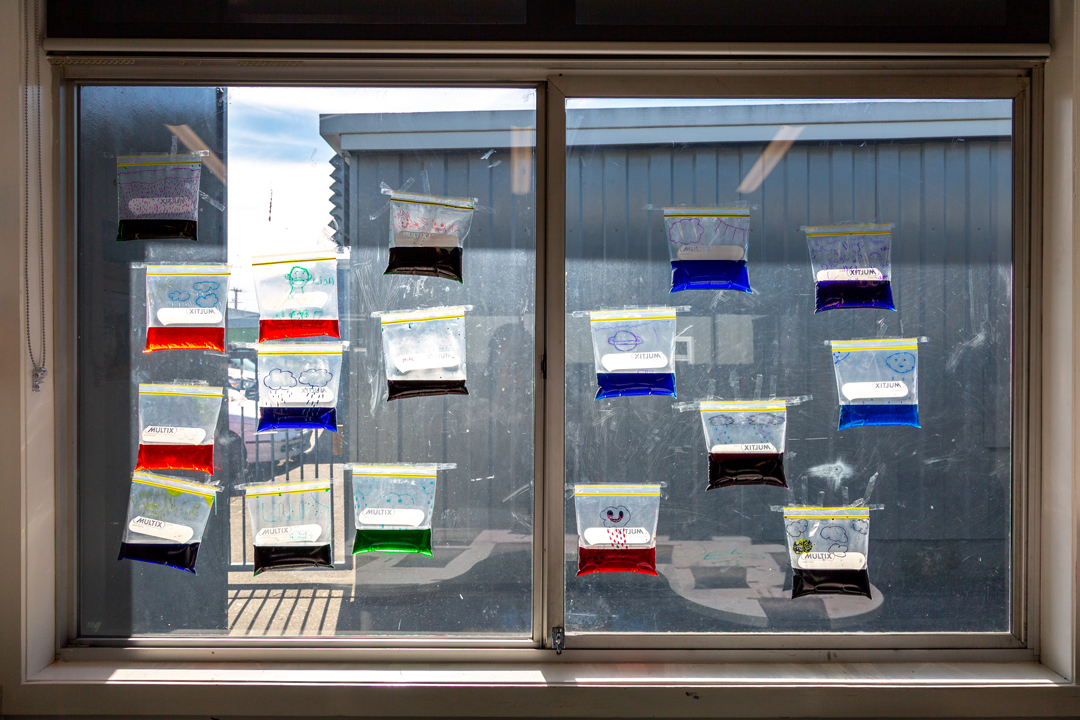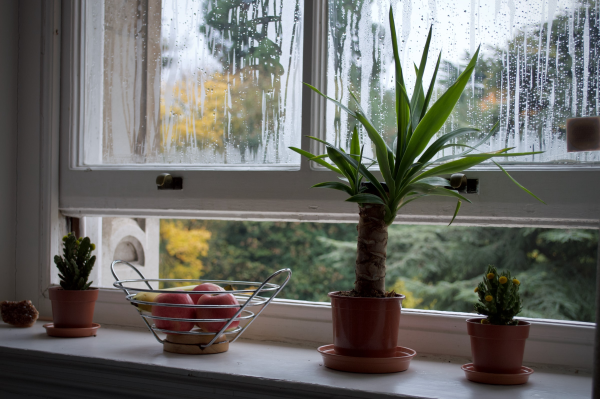Indoor air quality can affect how healthy your home is. Learn more about indoor air quality in this lesson.
On this page:
- Introduction
- Key summary points
- Good indoor air quality guide
- Activity: Weather bag
- Quiz: Indoor air quality and ventilation
- Worksheet: Indoor air quality and ventilation
Introduction
The amount of water vapour in the air is measured as humidity.
The humidity indoors is usually different than outdoors. Breathing, cooking and washing are some of the things that can increase indoor humidity. When indoor humidity is high enough for long enough, it can start to smell musty and mould can grow easily.
Low humidity can also be a problem as it can dry out your skin and make you feel itchy.
When we breathe, we produce carbon dioxide (CO2) gas. Cooking and some types of heaters also produce CO2. If levels get too high, people can start to feel dizzy or sleepy. CO2 can sometimes trigger attacks for people with asthma.
If humidity and CO2 levels get too high or low, the easiest way to reset the air in a room is by simply opening a window. This is known as ventilation.
Key summary points
- Humidity is the measurement of water vapour.
- Indoor humidity shouldn’t get too high or too low.
- Indoor CO2 levels shouldn't get too high.
- Ventilating rooms is important to reset indoor air quality.
Good indoor air quality guide
The Good indoor air quality guide provides detail about each of the below parameters that affect air quality.
Temperature Temperature is how hot or cold the air is, measured in degrees Celsius (°C). Things that affect the temperature include heaters, air conditioning, the sun, the changing season and where you live in the country.
Humidity Humidity tells us how much water is in the air and is shown as a percentage with the percent symbol (%). Things that affect humidity include cooking, cleaning and using air conditioning.
Carbon dioxide Carbon dioxide, also known as CO2, is a colourless, odourless gas in the air. It is measured in parts per million, or PPM. Carbon dioxide is created from breathing and some heating devices, among other things.
Dust Dust consists of tiny pieces of matter from various sources. Dust is split into different categories, depending on its size. Dust smaller than 2.5 micrometers is called particulate matter 2.5, or PM2.5, and is the main indicator used to determine dust and air quality. PM10 (particles smaller than 10 micrometers) and PM1 (particles smaller than 1 micrometer) are also sometimes used. Dust is measured as micrograms per cubic meter, or μg/m3.
Download the Good indoor air quality guide. [PDF 404 KB]
Activity: Weather bag
Equipment:
- Transparent tape
- A ziplock plastic bag
- A (thick!) marker
- Blue food colouring and a cup to mix it
- Water
- Notebook to record your observations
Make and deploy your bag
- Decorate your bag by using your permanent marker to draw weather on it.
- Mix your food colouring with a little water and pour it in the bag.
- Seal your bag up tight and stick it up onto the window (Hot tip! Seal most of your bag up and GENTLY squeeze out as much air from your bag as you can. Then blow new air into your bag. Why will this make a difference?)
- Take a photo to show your bag in its location.
- Record in your notebook all the locations you have put weather bags.
Weather diary
- Watch over the coming days. Does the amount of water increase?
- Does it change throughout the day?
- Make observations. Do you get droplets forming on the inside of the bag? When does that happen? What’s the temperature like? Is it sunny/cloudy?
- Investigate! What are the processes happening in your bag?
- In your notebook, record your observations each day in the morning or as often as you like. Take some photos.
If you are repeating the experiment, try keeping the bags out for a longer period of time before you make an observation. 
How to retrieve?
When you decide to take them down, take a photo of each of your bags from each location.
Create a poster, report or presentation of your results including your photos.
Quiz: Indoor air quality and ventilation
Check out our air quality quiz over on Kahoot.
The quiz works best on Kahoot, but if you prefer a text version, you can download it as a PDF [123 KB].
Worksheet: Indoor air quality and ventilation
Download worksheet [PDF 74 KB]


